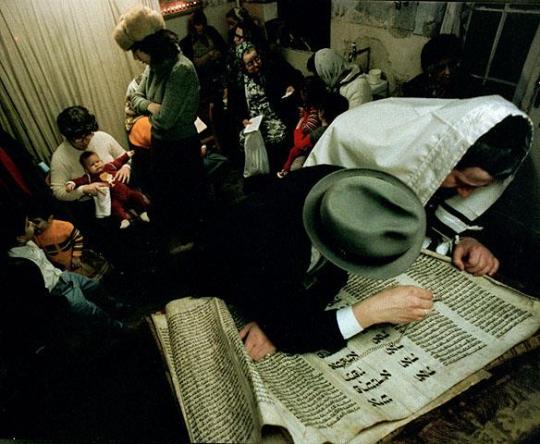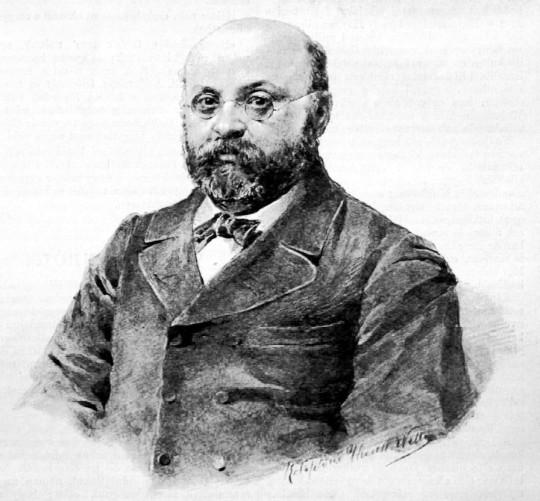#Hungarian Jews
Explore tagged Tumblr posts
Text
Finally visited Budapest for the first time!


As an Israeli Jew with Hungarian heritage this was so emotional ! I got to see the houses where my ancestors lived in, and toured the local synagogue .We even got to see local Jewish community’s ceremony commemorating October 7th💕🎗️Such a powerful experience !
Pictured above: me visiting the shoes on the Danube bank now adorned with hostages ribbons and pictures & the ghetto’s border.
***Not pictured: me crying like a baby since some of my distant relative were murdered there
#personal#Hungarian jews#budapest#israel#jewish#israeli#jewblr#ישראל#טאמבלר ישראלי#hamas is isis#middle east#ישראלי#jewish history
25 notes
·
View notes
Text
Mazal Tov Amulet, Budapest, Hungary, 1890 CE

This amulet was published by Ignaz Schwartz in Budapest.
10 notes
·
View notes
Text
#koushirouizumi ref#koushirouizumi refs#koushirouizumi no rb#koushirouizumi no rb posts#koushirouizumi jvl#jvl refs#hungarian jews#(Making it Clickable link)
0 notes
Text
פורים אין בודאפעשט

Reading the Megillah (Scroll of Esther) in the lobby of a synagogue in Budapest, Hungary, 1981
293 notes
·
View notes
Text

Ahasuerus at the End of the World by Adolf Hiremy-Hirschl, 1888.
#classic art#painting#adolf hiremy hirschl#hungarian artist#19th century#symbolism#mythology#ahasuerus#wandering jew#angels#grim reaper#woman#birds#arctic
53 notes
·
View notes
Text
Oh this is scathing





#German memory culture is so fascinating#Also to some extent french#My mother often claimed that we had Jewish ancestry and that a great-grandmother of mine was Jewish#Turns out she'd based that on ''Women talking a weird language'' coming to visit her grandmother#anyway after a whole round of genealogical research we learned that i actually have an Austria-Hungarian great-great-great#grandfather#that is; my great-grandma was talking her mother's home language with cousins that were from three towns over#and they spoke very bad Serbo-Croatian amongst themselves and often just switched to french#but my mother constructed in her mind this whole thing about us being part Jewish and she used to be fascinated by#Woody Allen Roman Polanski Claude Lanzmann the Marx Brothers Jewish humor etc.....#(My mother also spent six months in Germany as a teen during student exchange. i blame them)#But yeah this idea that since i'm neurotic and i had a big nose i was somehow secretly Jewish was drilled into me#She also thought that since my grandpa is Andalusian he probably had some Sephardic blood#Which. What exactly is supposed to be meant here by blood ??? Völk ? Blut ? one-drop rule ??????????#anyway this brand of philosemitism is becoming more and more repulsive to me#Jews are not an enlightened scholar-priest-stand-up-comedian caste with magical blood. They're an imagined community#Same as every other nation; religion; family; culture. Like everybody else they are as good or bad or interesting as imagination allows#And if we have to do weird philo-ism of an outgroup devoid of content let us do what writers have done for 500 years and#Write about talking animals#I'd rather we all collectively hallucinate the houyhnhnms as the quirky fun minority rather than cast real people in that role#or the pigs Napoleon was part of or whatever
22 notes
·
View notes
Text
Ethnicity is about shared culture, which usually (but not always) involves shared ancestry. Freaking Mormons are apparently considered an ethnicity, so it makes total sense for Jews to be an ethnicity (yes, even if people convert in)
#Just had someone assert with their full chest that Yair Lapid was ethnically Hungarian#Despite his father actually having been born in the Kingdom of Yugoslavia (now Serbia)#Jews get to determine what being a Jew means#Gentiles can shut it#jews#antisemitism
11 notes
·
View notes
Text
Shviti, European (original design is from Budapest), 1930 CE

According to the museum: "This printed Shiviti is a model that was copied and reprinted a number of times, apparently originating in Budapest. It is unusual in being printed with blue in on buff paper. The central menorah form with the words of the 67th Psalm is different than on most such plaques in that it is less schematic and more like a typical European candelabra. The remainder of the space is filled with texts, including the 42 letter name of God and many amuletic and kabbalistic abbreviations and inscriptions."
7 notes
·
View notes
Text

Synagogue of Újvidék, modern-day Novi Sad, Serbia
Hungarian vintage postcard
#photo#modern#ansichtskarte#novi#postal#postkaart#sepia#hungarian#tarjeta#ephemera#photography#carte postale#jvidk#judaica#historic#modern-day#jewish#serbia#synagogue#briefkaart#postcard#vintage#jews#postkarte
2 notes
·
View notes
Text
youtube
Edward Teller, nuclear physicist and "father of the H-Bomb," speaks about his colleague, mathematician John von Neumann.
Teller has such a fascinating demeanor and way of speaking.
#edward teller#john von neumann#manhattan project#nuclear bomb#hydrogen bomb#h bomb#some people say teller was the real-life inspiration for dr. strangelove#i believe it haha#both teller and von neumann were hungarian jews btw!#nuclear physics#oppenheimer#teller ede
4 notes
·
View notes
Link
"This project started somewhat by chance, like almost everything else in life," Éva Horvát, who came into contact with the community through Miklós Rékai, an ethnographer of the Jews of Mukachevo, says. Rékai had been researching the lives of the remaining Hungarian-identity Jews in Mukachevo for a year when Éva Horvát was offered the opportunity to join the project.
"It was a really big opportunity. I was very interested in this community, whose identity was defined by their origins and traditions, while they were living in socially different living conditions. Their system of traditions was rooted in an identity from a very long time ago, while on the other hand, their lives were defined by the pre-war period, the Holocaust, communism, and the regime change as well," the photographer explains.
She spent three years documenting the life of the Jewish community in Mukachevo, including visiting their religious festivals. "We would spend three or four days with them each time, staying in their homes, living with them," she says.
Horvát regularly visited the last Jewish diaspora in Mukachevo between 1992 and 1995, and the Hungarian Museum of Ethnography held an exhibition of her pictures in 1995. Later, the pictures appeared in various collections in several countries, although not in Mukachevo: the people of Mukachevo came to Hungary to see them.
The photos are now being published as a book for the first time under the title "Fallen Oaks, Scattered Seeds" – we chose a selection of the text and pictures from the publication and spoke with Horvát about how she and Rékai experienced the three-year project. Éva Horvát's photographic material is a memorial to the last Hasidic community in Mukachevo, and provides us with a glimpse into the poverty of socialism and the collapse of Transcarpathia after the fall of communism. At the same time, the photos also give insight into the life of a community traumatized by war, whose members, in their own way, are holding on to what keeps them together – their traditions and their religion.
For a long time, Mukachevo was one of the centers of Hungarian-speaking Jewry, the bastion of Hasidism in Hungary, as the book describes it. It was in the 17th century that some Jews from Galicia and Ukraine came to the area of Mukachevo and founded a new community. They were trying to escape the rule of the Zaporizhzhya Cossack Bohdan Khmelnitsky and the ethnic cleansing that took place under him. The Jewish congregation was officially established in 1741, and the town was given a synagogue.
The community soon began to flourish: as the book describes, the number of Jews in Transcarpathia almost doubled between 1869 and 1910, from 64 903 to 128 791. "In 1778 there were already Jewish craftsmen in the area of Mukachevo. [...] The Jews are taking an interest in the public affairs of the city, and they also take a keen interest in the election of judges. In 1792, the Jews consumed wine at the rate of 9 pints", Imre Csetényi wrote in his 1928 text on the Jews of Mukachevo, in his work describing the presence of Jews in the area in the 18th century.
In 1941, the Hungarian army marched into Mukachevo, and the persecution and harassment of Jews began. As Horvát says, before the war, at least 50 percent of Mukachevo's population was Jewish, and the Holocaust became a huge watershed.


10 notes
·
View notes
Text

They should never have taken duels out of politics. politicians yearn to be allowed to shoot at each other these days you can tell
#for the uninituated:#this guy was the first jew to be elected to the hungarian parliament#he fought a famous duel with an antisemitic congressman#the antisemite was extremely hungover and wahrmann had extremely bad eyesight so they both missed
16K notes
·
View notes
Note
top 5 portrayals of jesus in modern media?
you're going to hate me for this but i don't have any: i do like how jesus is portrayed in jesus christ superstar and the last temptation of christ. but i have not seen one single version of jesus that i have actually thought was culturally sensitive, historically accurate, and theologically sound.
i'll caveat this by saying i have yet to watch pasolini's gospel according to saint matthew, and i'm extremely excited about terence malick's upcoming film the way of the wind.
#the number of people who have told me to watch the chosen is insane to me. i am not watching that#malick cast a hungarian jew as jesus and he just Feels like jesus to me#but there is almost no info about the movie so im just assuming purely off vibes
8 notes
·
View notes
Photo
100 years ago:


Szeged, Hungary (by Greggreen73)
#jew#europe#postcard#jews#old#photography#photo#szeged#judaica#judaism#patrimoine#hungary#synagogue#monument#carte postale#hungarian#architecture#vintage
514 notes
·
View notes
Text
#koushirouizumi ref#koushirouizumi refs#koushirouizumi no rb#koushirouizumi no rb posts#koushirouizumi jvl#jvl refs#galician jews#austro hungarian empire#1770's#1880's#1890's#(Saving as Clickable link)
0 notes
Text

The Davis (nee: Davidavitch) of Yonkers, New York circa 1898
The family: (all I can identify)
Sam Davis (father)
Rosa Mermelstein Davis (mother)
Daisy Abel (oldest sibling)
Gertrude Steiner (second oldest)
Emanuel “Mannie” (middle child)
William (penultimate youngest)
and Philip (youngest)
There’s a 6th child in the photo that I’m not available to identify, it appears to be another girl in the bottom sitting from the second oldest. Gertrude. Sidney and Arthur were born in 1900 and 1905 respectively. Mannie, Phil, “Butch” (Sidney) and Art all worked in animation. With Art being the most known out of all the four brothers who were in the industry
#family#family photos#1898#yonkers#new york#new york animation#california animation#ukranian#hungarian#jews#art davis has the most recognition#while the other three mainly remain in obscurity#animation family#families#found this photo from find a grave#cartoon research and harry mccrackens scrappy blog are some sources on the families maiden name#but it could be davidovich#animation#1890s
1 note
·
View note